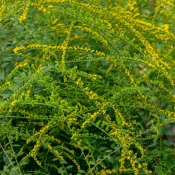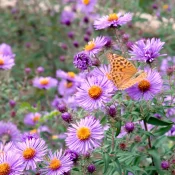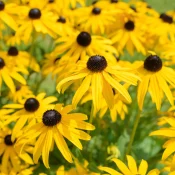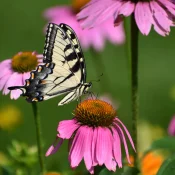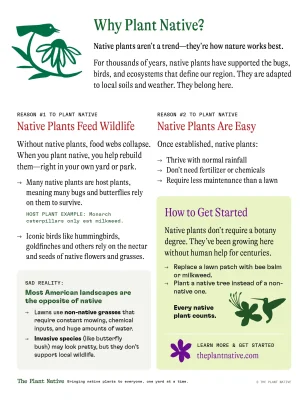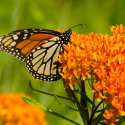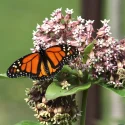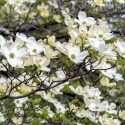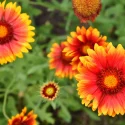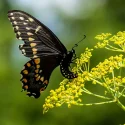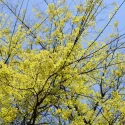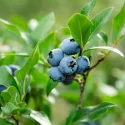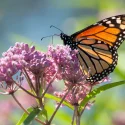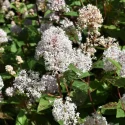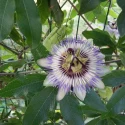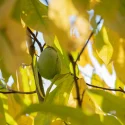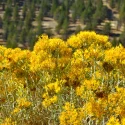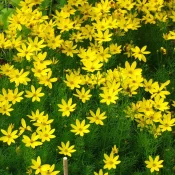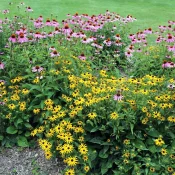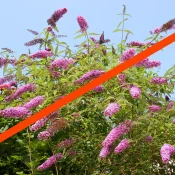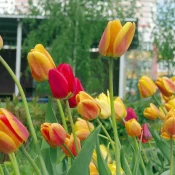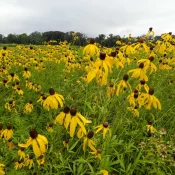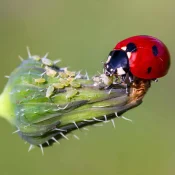Why plant native?
Native plants aren’t a trend—they’re how nature works best.
For thousands of years, native plants have supported the bugs, birds, and ecosystems that define our region. They are adapted to local soils and weather. They belong here.
Here are three reasons to plant native:
- Native plants feed wildlife: birds, butterflies, and pollinators need native plants to survive and thrive.
- Native plants are easy: they rarely require water besides rain once they are established.
- Native plants are gorgeous: your yard or park will look incredible.
Let’s explore these three reasons to plant native, and meet some amazing native plants along the way.
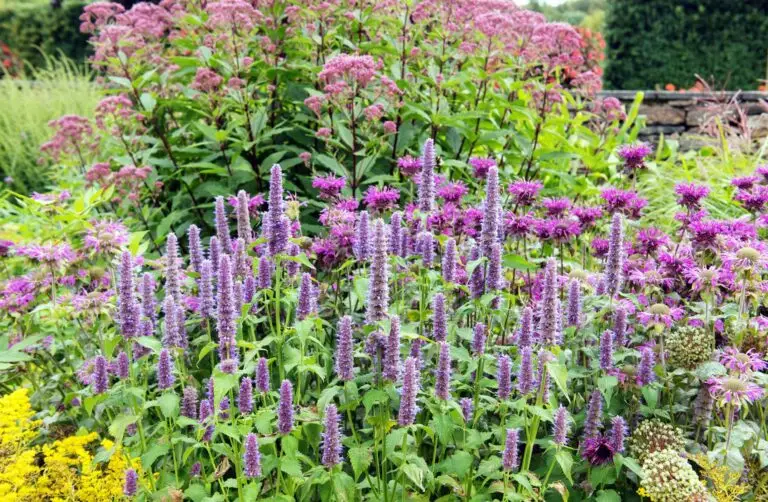
Native plants feed wildlife
Most butterflies need native plants to survive
Native plants are necessary food for many butterfly caterpillars. As we remember from elementary school, butterflies start as eggs that turn into tiny hungry caterpillars, who then munch away until they make a chrysalis and emerge as beautiful butterflies. Unlike The Very Hungry Caterpillar, caterpillars in nature eat mostly leaves (and some flowers).
Some caterpillars eat only certain plants: these are their host plants
Some caterpillars only eat specific species of plants—these are called host plants. A host plant you may know is milkweed. Milkweed is the host plant of the monarch butterfly. Monarch caterpillars only eat milkweed, so monarch butterfly moms only lay their eggs on milkweed. (Thankfully there are 100+ species of milkweed found throughout North America—everyone can plant some.)
Without milkweed, there would be no monarch butterflies. Monarchs have declined by more than 80% since the 1990s, in part because of the lack of milkweed. This is why it is important for every American living in the continental US—from Maine to Texas, from Oregon to Florida—to plant milkweed in our gardens and help the endangered monarch butterfly.
Milkweed isn’t the only native host plant—
Almost all host plants are native plants
Milkweed is just one native host plant. Here are some native host plants and their butterfly mates found throughout North America:
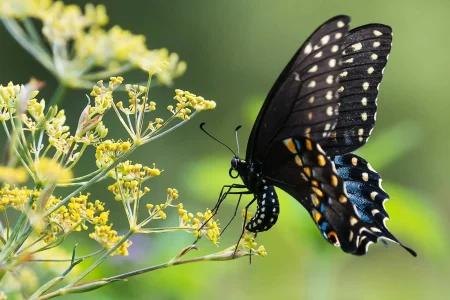
Golden Alexander are a host plant for the Black Swallowtail butterfly.
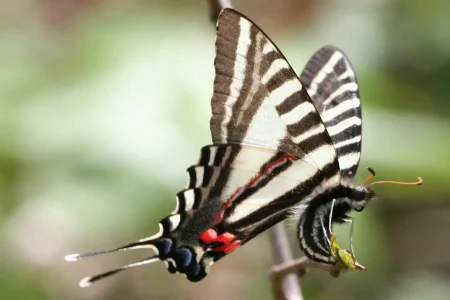
Pawpaw trees are host plants for the Zebra Swallowtail butterfly, which is thankfully making a comeback.
Plant the native host plants for your area’s butterflies to help increase butterfly populations. Host plants and animals have evolved together over thousands of years to become almost monogamous with each other’s species. A native host plant and its butterfly are examples of these interdependent relationships. These relationships require the host plants to thrive for the butterflies to survive. Explore the National Wildlife Federation’s Butterfly Database to find hundreds of host plants for your zip code or visit our list of butterfly host plants to find inspiration.
Butterflies aren’t the only picky eaters
Besides helping butterflies, native plants provide crucial support for pollinators, including native, specialist bees.
What is a native, specialist bee?
We all know bumble bees. But do you know about the 3,700+ species of native bees in North America?
Many of these bees are specialist bees. “Specialist bees are those that eat pollen from one genus or family of plants—they may collect nectar from a much greater variety.” Learn more from pollinator expert Heather Holm. Her websites, books, and lectures are—sorry for the bad pun—the bee’s knees.
(BTW, honeybees came from Europe; they were imported in the 1600s.)
Want to plant for specialist bees? We recommend the Asteraceae plant family, which supports “the most pollen specialist bee species in all regions of the United States” (source)
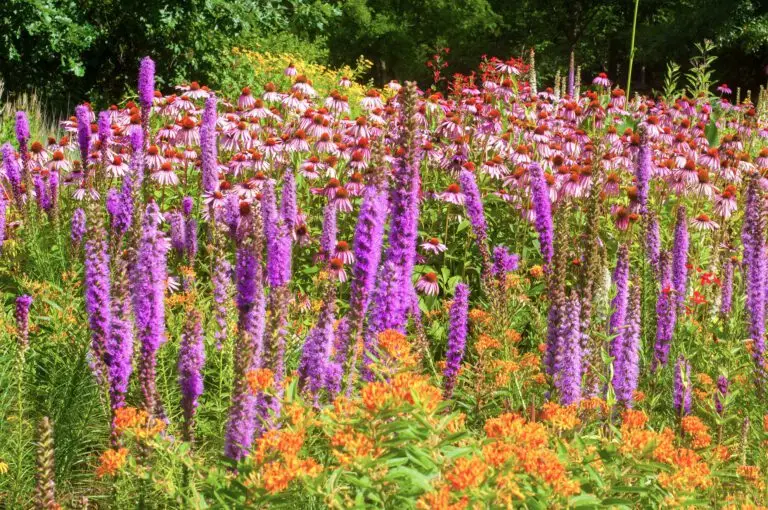
Native plants are easy
Planting native saves water
No matter your politics, water bills are a real pain. You can enjoy a beautiful native garden without a shocking water bill. Most native plants only need normal rainfall in their area once established. (Don’t just take it from The Plant Native! The New York Times agreed, saying, “[native plants] save water, since native species, when they’re placed in an appropriate spot, generally don’t require watering once established.”
Plant native plants in their proper sunlight/soil, and chances are you won’t have to spend time putting in expensive hydration systems or hauling hoses and watering cans around. Go on vacation and worry less about your landscaping being OK when you return. Most native plants thrive with normal rainfall.
A note from The Plant Native…
Some visitors have pointed out that even native plants need extra water during extreme heat or drought. They’re right—extreme weather requires additional care for all plants. We’ve updated our guidance: once established, native plants typically thrive with just rain, needing less water than many non-natives.
Planting native saves time
Now that we’ve discussed water, let’s discuss work. We’ve said it before: it’s a cultural myth that gardens are hard and lawns are easy.
The truth: native plants have grown in our home areas with no human help for thousands of years. They lived for generations without fertilizer, sprinkler systems, or any annoying digging up at the end of the season. All they need to live, grow, and multiply is the soil, light, and water they prefer in their home area. Once you give them that, you can almost always forget about them once they are established, generally after the first year.
Compare this to lawns: the time suck of our lives
We did the math in another article—lawns can take 2400% MORE TIME than a native garden. You don’t have to completely replace your lawn with a meadow (unless that’s your thing!) Simply reducing the amount of lawn is a positive change.
Skeptical? For those who say they “kill every plant,” we have some good news—
Native plants help give you a ‘green thumb’
If you feel gardening is frustrating, disappointing, or a waste of money, try native plants. They are the easiest to care for and are made for your home area.
- If you’ve planted things in the past that have withered and died, native plants are for you.
- If you’re worried about your garden surviving while you take a vacation, native plants will help.
- If you’d like to save money on landscaping, plant native perennials plants that come back year after year to be one-and-done with your garden.
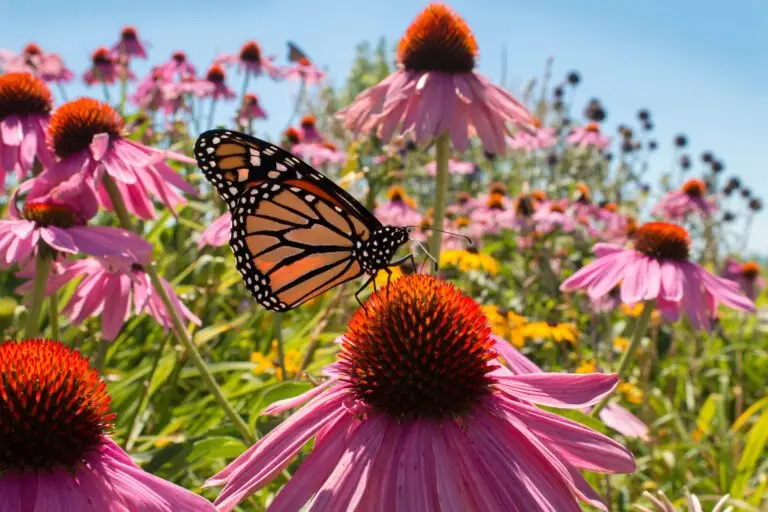
Finally, native plants are gorgeous
Native plants are not boring, or bleh-looking. There are dozens that have beautiful flowers and leaves every color of the rainbow.
- Redbud trees have heart-shaped leaves and cover their trunks with tiny pink flowers during the first weeks of spring.
- Little Bluestem grasses change color throughout the seasons, behaving more like a fashionista than a plant.
- Heucheras love shade, are semi-evergreen and have leaves that come in dozens of colors.
- Pawpaws make North America’s largest edible fruit! (it’s like a mango…that can grow in Nebraska.)
- Fringe trees…well, you’re not going to believe what they look like (or smell like) in bloom.
Some have incredible names, too! Here are some new favorites for your garden:
Want this content as a downloadable 1-pager?
We got you. Here is a printable PDF to share.
Planting native plants is an important way to provide food and homes to birds and butterflies while saving time and money on gardening. Your garden will look better than ever with native plants, too. Now is the perfect time to start your native garden.
Wondering where or how to start? Visit our thematic guides, like Best Native Plants for Birds or a Beginner’s Guide to Planting a Hummingbird Garden. Or how about starting with a tree? Our Best Native Trees for Front Yards is your starting place. Happy planting!
Sources
- Einhorn, Catrin.“Nurturing Nature in Your Yard.” The New York Times, April 21, 2023.
- Emgushov, Catherine. Penn State Master Gardener. “Native Bees,” June 14, 2023.
- Fowler, Jarrod R. & Droege, Sam. “Pollen Specialist Bees of the Eastern United States,” Jarrodfowler.com, 2020.
- Harstad, Carolyn. Go Native! Gardening with Native Plants and Wildflowers in the Lower Midwest. (1999).
- Holm, Heather. “Specialist Bees,” 2024.
- Nelson, Gil. Best Native Plants for Southern Gardens: A Handbook for Gardeners, Homeowners, and Professionals, (2010).
- Xerces Society. “Monarchs in Decline,” March 6, 2025.
- Xerces Society. “Delectable Native Plants Attract a Very Special Crowd,” 2015.
